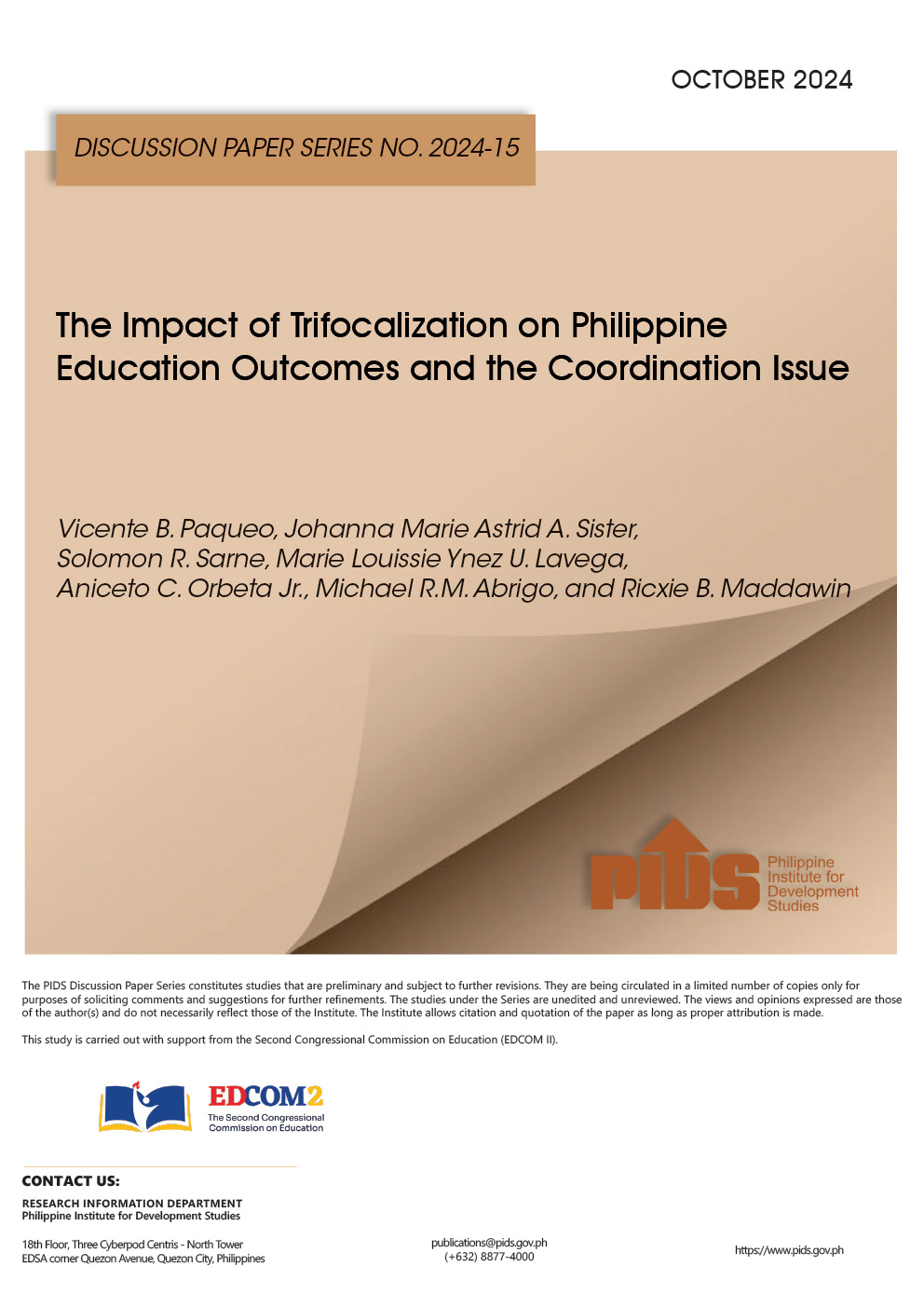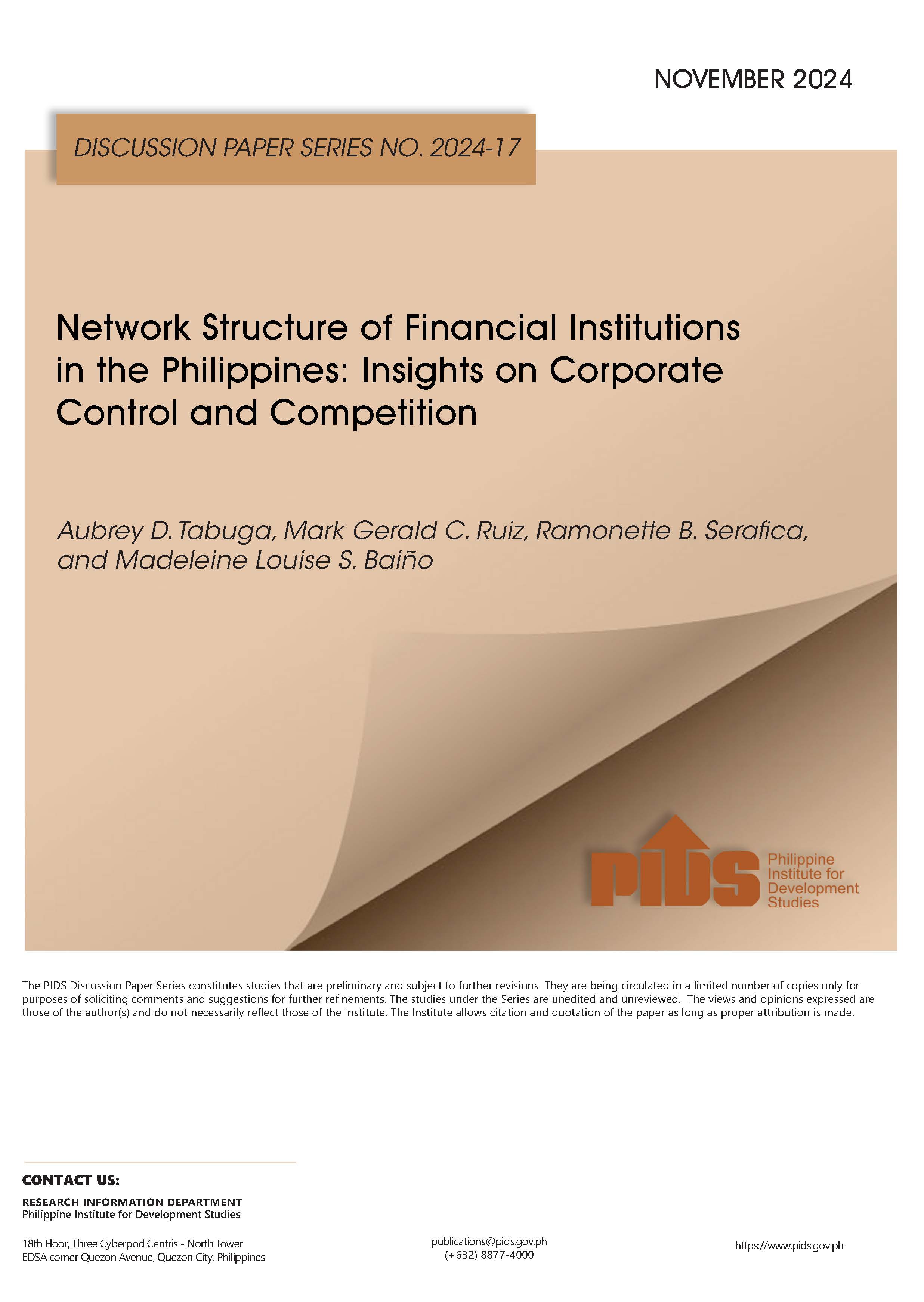The services sector dominates the Philippine economy. In 2015, it accounted for 59 per cent of GDP and 54.5 per cent of employment. In recent years the industry sector — which includes manufacturing and construction — has started to recover, growing faster than services. But given its size, the services sector remains the key driver of the economy contributing more to GDP growth than all other sectors combined.
A Filipino trader blows a new year horn during celebrations marking the last trading day of the year 2014 at the Philippine Stock Exchange in Manila. Key reforms of the services sector, including the liberalisation of financial services, are driving growth in the Philippines. (Photo: AAP).
The services sector consists of a wide range of industries with varying capital and skill intensities. Although retail trade continues to lead in terms of size, the rise of business activities as the next biggest industry illustrates the importance of information technology and business process management (IT-BPM) as the new source of dynamism in the economy. The Philippines’ comparative advantage in these activities explains the significant improvement in commercial services exports from 47th in 2005 to 34th largest in the world in 2015.
The success of the country in this space has been attributed to various factors, including a large pool of young, English-speaking talent; an affinity with western culture; previous telecom reforms; investment incentives and government support for training. The leadership of industry associations and effective public–private partnerships likewise contributed to its sustained growth.
In addition to supporting the IT-BPM industry, key economic reforms under the administration of President Benigno Aquino III include the opening up of air services, banking and shipping services. A range of financial services is also set to be fully liberalised.
Equally important are recent reforms that will help improve the competitiveness of the services sector, which relies heavily on the quality of human capital and increasingly on digital infrastructure (in terms of both the physical and policy environment). These include the Enhanced Basic Education Act of 2013, the Data Privacy Act of 2012 and the Department of Information and Communications Technology Act of 2015.
Perhaps the most significant structural reform is the 2015 Philippine Competition Act. This is especially relevant in the services sector given the presence of a few dominant firms in network industries. Already, all eyes are on the Philippine Competition Commission as it goes through its baptism of fire with the review of a major telecommunications deal.
The incoming government has stated that its development priorities will have a bias toward agriculture and manufacturing and away from Metropolitan Manila. Fortunately, this policy direction augurs well for services too as demand by firms for better logistics, research and development, finance and other business services will be heightened with the revitalisation of the goods sector. Household consumption of services from recreation, amusements and cultural services to health and education will increase as well with improved incomes and a growing middle class.
Of the 10-point socioeconomic agenda of President-elect Rodrigo Duterte, relaxing the restrictive economic provisions in the Philippine Constitution — which affects a range of services including telecommunications, transport services, advertising, mass media and education — will have the most direct and immediate impact on the sector. The liberalisation of these industries particularly infrastructure services will have a profound effect on other sectors, boosting productivity in agriculture and manufacturing.
With these policy reforms, both in the recent past and as proposed, services will likely continue to be the main driver of the Philippine economy. What will really improve this services-led economy is if it is able to transform from one where low-skilled activities abound to one that is increasingly knowledge-based with more high value-added activities.
Ramonette B. Serafica is a Senior Research Fellow at the Philippine Institute for Development Studies.
A Filipino trader blows a new year horn during celebrations marking the last trading day of the year 2014 at the Philippine Stock Exchange in Manila. Key reforms of the services sector, including the liberalisation of financial services, are driving growth in the Philippines. (Photo: AAP).
The services sector consists of a wide range of industries with varying capital and skill intensities. Although retail trade continues to lead in terms of size, the rise of business activities as the next biggest industry illustrates the importance of information technology and business process management (IT-BPM) as the new source of dynamism in the economy. The Philippines’ comparative advantage in these activities explains the significant improvement in commercial services exports from 47th in 2005 to 34th largest in the world in 2015.
The success of the country in this space has been attributed to various factors, including a large pool of young, English-speaking talent; an affinity with western culture; previous telecom reforms; investment incentives and government support for training. The leadership of industry associations and effective public–private partnerships likewise contributed to its sustained growth.
In addition to supporting the IT-BPM industry, key economic reforms under the administration of President Benigno Aquino III include the opening up of air services, banking and shipping services. A range of financial services is also set to be fully liberalised.
Equally important are recent reforms that will help improve the competitiveness of the services sector, which relies heavily on the quality of human capital and increasingly on digital infrastructure (in terms of both the physical and policy environment). These include the Enhanced Basic Education Act of 2013, the Data Privacy Act of 2012 and the Department of Information and Communications Technology Act of 2015.
Perhaps the most significant structural reform is the 2015 Philippine Competition Act. This is especially relevant in the services sector given the presence of a few dominant firms in network industries. Already, all eyes are on the Philippine Competition Commission as it goes through its baptism of fire with the review of a major telecommunications deal.
The incoming government has stated that its development priorities will have a bias toward agriculture and manufacturing and away from Metropolitan Manila. Fortunately, this policy direction augurs well for services too as demand by firms for better logistics, research and development, finance and other business services will be heightened with the revitalisation of the goods sector. Household consumption of services from recreation, amusements and cultural services to health and education will increase as well with improved incomes and a growing middle class.
Of the 10-point socioeconomic agenda of President-elect Rodrigo Duterte, relaxing the restrictive economic provisions in the Philippine Constitution — which affects a range of services including telecommunications, transport services, advertising, mass media and education — will have the most direct and immediate impact on the sector. The liberalisation of these industries particularly infrastructure services will have a profound effect on other sectors, boosting productivity in agriculture and manufacturing.
With these policy reforms, both in the recent past and as proposed, services will likely continue to be the main driver of the Philippine economy. What will really improve this services-led economy is if it is able to transform from one where low-skilled activities abound to one that is increasingly knowledge-based with more high value-added activities.
Ramonette B. Serafica is a Senior Research Fellow at the Philippine Institute for Development Studies.











